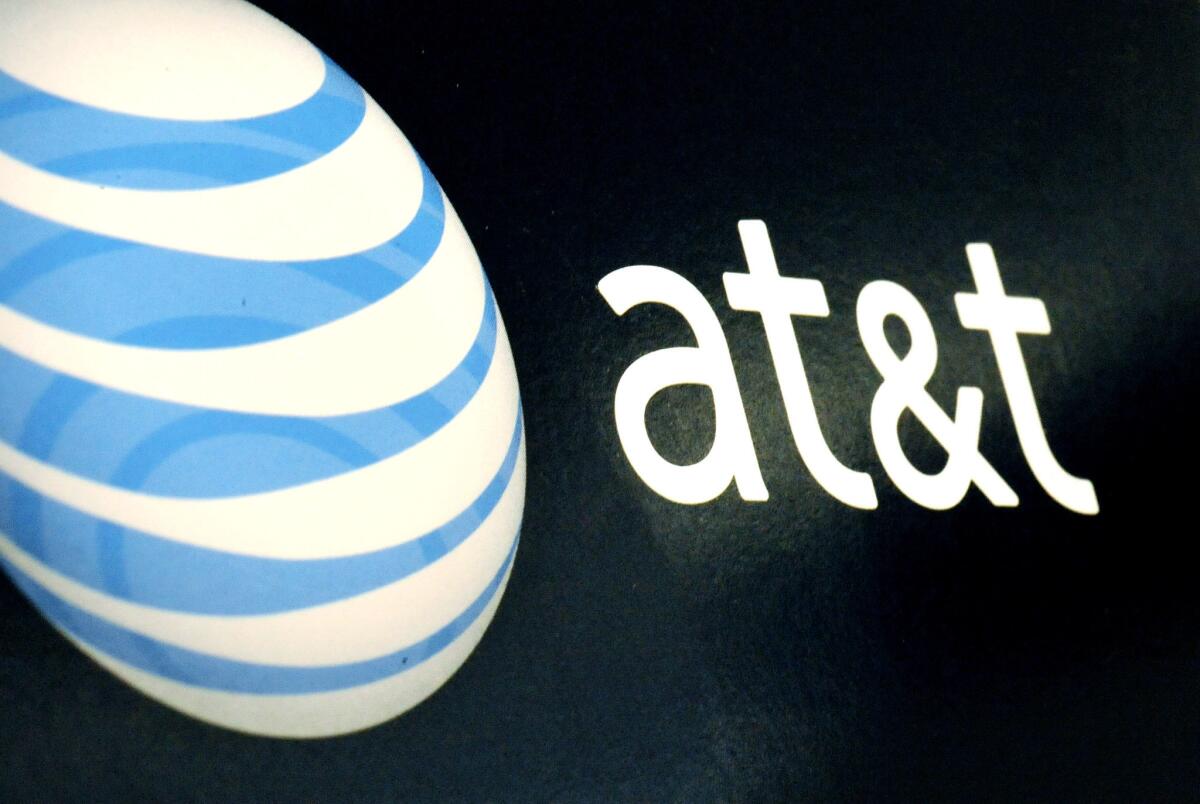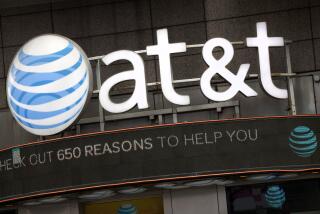Opinion: In AT&T’s U-verse world, faster may not necessarily be better

- Share via
I know I should be happy about AT&T’s announcement Monday that it might bring significantly faster broadband service to Los Angeles. After all, gigabit speeds are likely to open the door to whole new cloud-based services and other innovations. And if AT&T pushes its U-verse fiber optics closer to homes, that will raise the pressure on Time Warner Cable (soon to be Comcast?) to offer higher speeds as well.
Nevertheless, as a U-verse customer, I’m still steamed about AT&T raising its monthly service charge twice since the beginning of last year, with no appreciable improvement in the quality of the video streams. And the reason I upgraded to U-verse from one of AT&T’s less expensive plans was to get better video.
I’m on the High Speed Internet Max plan, which offers up to 12 Mbps. I regularly get a little over 10 Mbps, which should be more than enough to support a couple of high-definition video streams. The monthly bill jumped from $51 to $56 in March; in February 2013, it had gone from $48 to $51. That’s a 16.7% increase in 13 months, or approximately an order of magnitude more than the increase in the cost of living.
Who said the cost of technology declines over time?
In its announcement, AT&T said it was “exploring” the possibility of bringing to 21 metropolitan areas the same version of U-verse that it has rolled out in Austin, Texas (and has pledged to three other regions). This version offers up to 1 Gbps downstream, matching the speed that Google offers in Austin and two other cities. Google has announced plans to expand to nine metropolitan areas. Cable operators already have the technology to support 1 Gbps and are working on an update that will support 3 Gbps, but they haven’t offered speeds that high.
Ultra-high-speed broadband deployments suffer from a chicken-and-egg problem: there’s no compelling apps for residential users that would justify paying a premium for gigabit service, but there’s no reason to develop those apps when no one can use them. Still, the folks at Gig.U make a persuasive “Field of Dreams” argument. And the investments by Google, the wireless phone carriers and the cable operators (notably Time Warner Cable, which announced an upgrade to 300 Mbps in selected cities) suggest that any Internet service provider that stands pat risks becoming obsolete.
How quickly and broadly AT&T expands its gigabit U-verse remains to be seen; the company said Monday that it wouldn’t increase the capital spending it had planned for 2014. Which if any of the 21 metro areas get the faster AT&T service will depend on a number of factors, the company explained, saying, “Communities that have suitable network facilities and show the strongest investment cases based on anticipated demand and the most receptive policies will influence these future selections and coverage maps within selected areas.”
Of course, AT&T could improve its customers’ experience without investing a penny in new fiber optic roll-outs. As anyone who followed the Netflix-Comcast interconnection story knows, streaming quality is heavily dependent on the content provider’s connection with the viewer’s ISP. Netflix had been using Cogent, a provider of Internet transit services, to deliver streams from its servers to many of its customers. Cogent’s connections to Comcast were frequently congested, but Comcast was refusing to give Cogent more capacity unless Cogent, which dumped far more traffic onto Comcast’s network than Comcast delivered to Cogent, paid for it. Eventually, Netflix decided to pay Comcast in order to connect directly to the ISP, rather than running its traffic through Cogent. As a consequence of the deal, Netflix’s streaming quality improved dramatically on Comcast’s network.
[Netflix complained Monday that Comcast’s proposed acquisition of Time Warner Cable would give it more power to extract “arbitrary interconnection tolls” from online content providers. Comcast retorted that the recent interconnection deal between the two companies was Netflix’s idea.]
By the way, Netflix ranks AT&T near the bottom in terms of streaming quality. That doesn’t surprise me, considering how poorly it performs in my house in the evenings. The same is true for Amazon’s video-on-demand service and the streams that iTunes makes available for videos as they’re downloading.
It probably sounds churlish for me to complain about these things just as AT&T is raising the possibility of bringing transformative broadband speeds to many of the population centers in its territory. But it won’t be much help to have 100 times the bandwidth if there’s a bottleneck higher up the pipe.
ALSO:
Is the U.S. losing the tech race?
Free trade on steroids: The threat of the Trans-Pacific Partnership
Follow Jon Healey on Twitter @jcahealey and Google+
More to Read
A cure for the common opinion
Get thought-provoking perspectives with our weekly newsletter.
You may occasionally receive promotional content from the Los Angeles Times.











